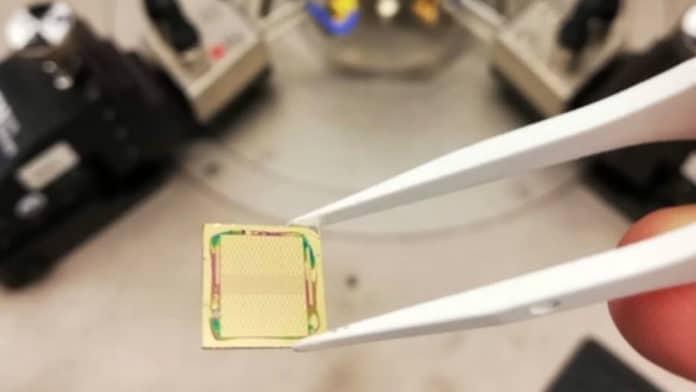For years, a bottleneck in technological development has been the question of how to make processors and memories work together more quickly. Now, researchers at Lund University in Sweden have presented a new solution integrating a memory cell with a processor, which enables much faster calculations, as they happen in the memory circuit itself.
The researchers present a new configuration in which a memory cell is integrated with a vertical transistor selector – all of this on a nanoscale. This brings improvements in scalability, speed, and energy efficiency compared to current mass storage solutions.
The problem of processor’s computations happening much faster than the speed of the memory unit has been well known for many years. Called “von Neumann bottleneck,” it happens because the memory and computation units are separate, and it takes time to send information back and forth via what is known as a data bus, which limits speed. The limitation has been in the construction of circuit boards with units placed next to each other on a flat surface.
Now, the idea is to build vertically in a 3D configuration and to integrate the memory and processor, with computations taking place within the memory circuit itself.

“Our version is a nanowire with a transistor at the bottom and a very small memory element located further up on the same wire,” says Lars-Erik Wernersson, professor of nanoelectronics. “This makes it into a compact integrated function where the transistor controls the memory element. The idea has been around before, but it has proven difficult to achieve performance. Now, however, we have shown that this can be achieved and that it works surprisingly well.”
The team is working with an RRAM (Resistive Random Access Memory) memory cell and has succeeded in achieving a functional integration that gives rise to great possibilities. This result opens up new, improved functions in everything from AI and machine learning to ordinary computers as well, eventually. Future applications could be various forms of machine learning such as radar-based gesture control, climate modeling, or the development of various drugs. The memory even works without a power supply, said Saketh Ram Mamidala.
At Lund, researchers have long been successful when it comes to building nanowires in what is known as the III-V technology platform. The material integration in Lund is unique, and researchers have greatly benefited from the MAX IV laboratory in developing the material and being able to understand its chemical properties.
“Solutions can probably be found in silicon as well, which is the most common material, but, in our case, it is the choice of material that enables the performance. We want to pave the way for an industry with our research”, concludes Lars-Erik Wernersson.
